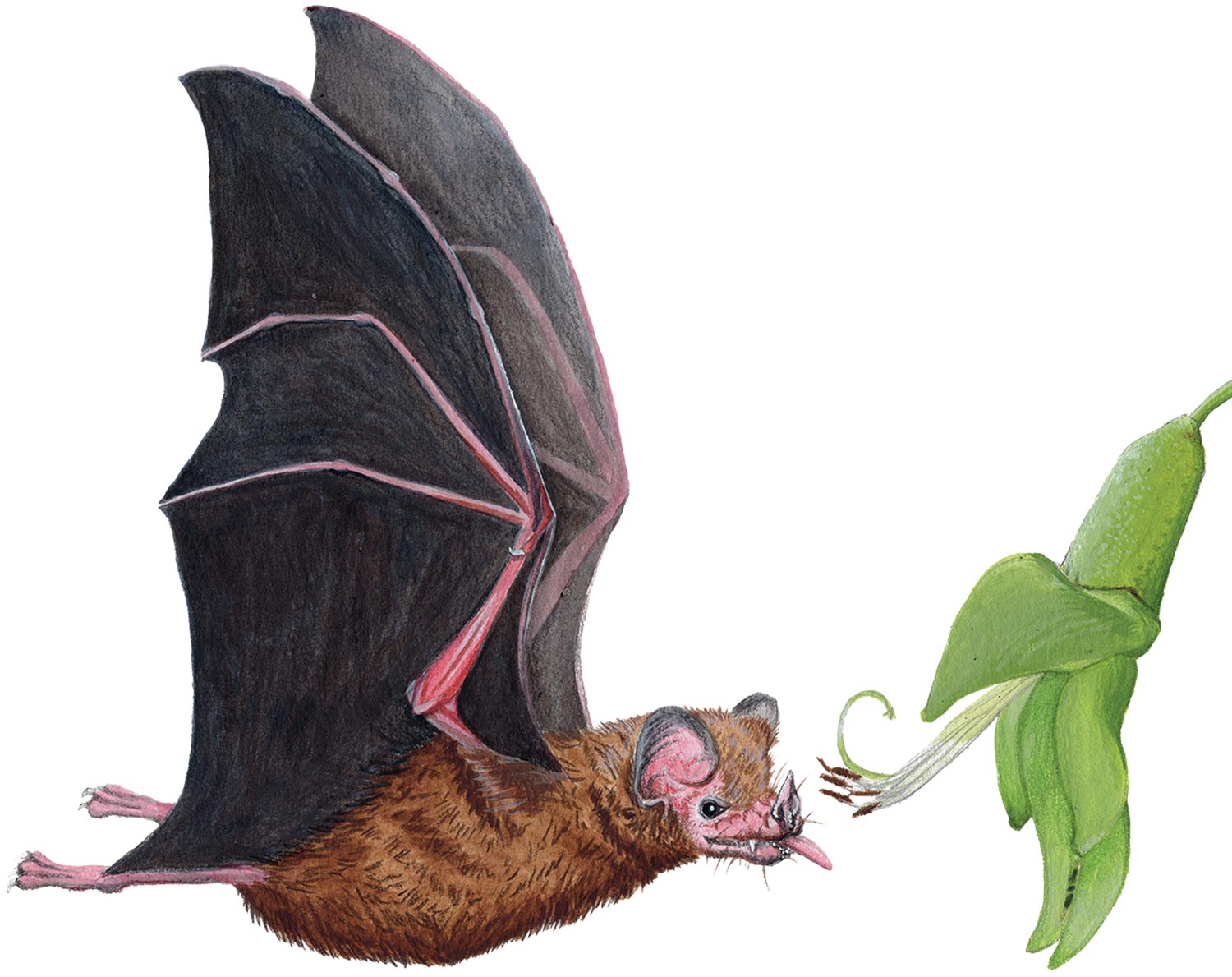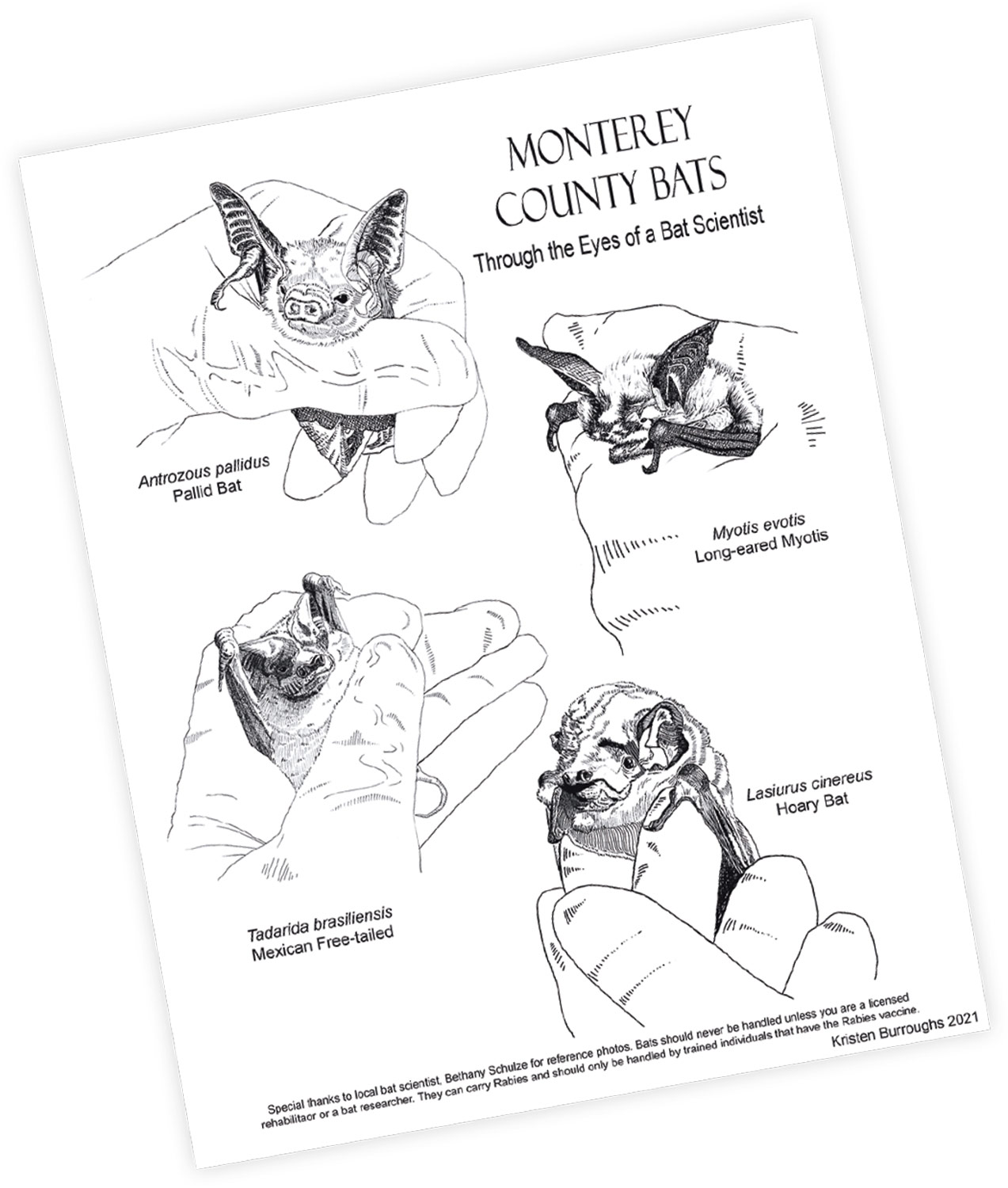
Bat Artist
fter she graduated from California State University, Monterey Bay (CSUMB), with a degree in marine science, Kristen Burroughs began working as a zookeeper. She worked in animal care and gave tours for several years, but she felt like she wanted to be more creative. So, she went back to school to earn a certificate in scientific illustration from CSUMB. As the final step in her program, she completed an internship with Bat Conservation International (BCI) during the summer of 2022.

Putting creativity to work
Burroughs has always loved bats. When she was earning her undergraduate degree, she volunteered to help graduate student Bethany Schulze with a research project on western red bats and hoary bats. Burroughs went out in the field with Schulze and helped set up mist nets and record data.

Burroughs has always loved bats. When she was earning her undergraduate degree, she volunteered to help graduate student Bethany Schulze with a research project on western red bats and hoary bats. Burroughs went out in the field with Schulze and helped set up mist nets and record data.
Before applying to the scientific illustration program, Burroughs taught herself digital art and enrolled in several art classes to prepare, including field sketching for drawing landscapes, plants, and animals. In class, she and her classmates practiced sketching specimens like skulls, mounts, and shells.
The scientific illustration program taught her a lot about art but also about marketing, creating an online presence, and selling her work. “I learned so much not just about how to use different art mediums, but also how to be an artist in the world of today,” she says.
Depicting bats
One of the most unique projects she worked on during her internship with BCI was depicting a newly discovered bat species, Nimba myotis (Myotis nimbaensis). BCI Director of Endangered Species Interventions Dr. Jon Flanders shared close-up images of the bats’ body parts, like its wings, tail, and face, and she had to stitch them all together.
“I started putting this little animal together because there was no photo of the way that I was trying to draw it,” Burroughs says. “You have to carefully put the pieces together to accurately represent the animal.”
After completing the drawing, she sent it off to the scientists to verify the illustration looked right.
What advice would she give people who might be interested in learning scientific illustration? She says it’s best to have the actual item in front of you, but when that’s not possible, photos and videos can be a great guide. She also encourages people to keep at it.

“Don’t stop drawing, because that’s going to be your biggest tool for science illustration,” she says. “Get out in nature and draw what you see. Never stop being inspired.”